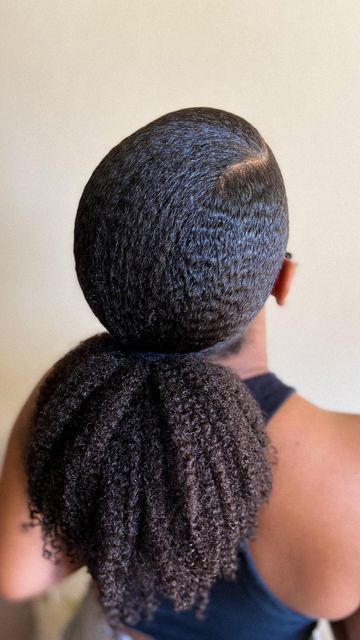
WHEN YOUR HAIR SENDS AN SOS: Recognizing and Treating Damaged Hair
|
|
Time to read 3 min
Written by: Mimi Kone
|
|
Time to read 3 min
Picture the scene. You are standing in front of the mirror, looking at your hair with an air of defeat on your face. You are looking at the crown that is your hair and think to yourself that it doesn’t look all that “glorious”. Brittle strands, split ends, different curl textures, you name it; you are afflicted with it.
I get it. I think we’ve all been there. This is why I thought writing about and providing practical steps to reverse the damage may help.
Hair damage can sneak up on even the most diligent hair care routines. From chemical processes to heat styling to environmental factors, our tresses take a beating. But there are telltale signs that indicate your hair needs a little TLC. Being able to recognize these signs early allows you to course correct before the damage becomes severe.
Some common indicators that your hair is distressed include:
SPLIT ENDS
Split ends can wreak havoc if they aren’t dealt with, especially if the cause of damage persists. Numerous things can cause split ends: dryness, over-manipulation, excess friction, snapping, heat/color damage.
TEXTURE CHANGE
Stringy, straight ends and looser curl patterns. These sorts of noticeable changes in texture can be a red flag. Excessive heat is usually the culprit, but bleach/colour damage, dryness or over-manipulation can be contributing factors as well.
LACK OF ELASTICITY
Damaged hair loses its elasticity, which is what causes our curl patterns to loosen and stretch.
DRY & BRITTLE
If they are feeling uncharacteristically dry, then it’s time to turn up the hydration.
TANGLES EASILY
If you’re constantly wrestling with your hair, or find that your curls are tangling up almost right after you’ve just detangled them, then something just isn't right. Dry and damaged strands create more friction and snag on to each other more easily.
BREAKING & SNAPPING
Damaged strands break off at the weakest point in the hair shaft and typically vary in lengths but are usually a lot shorter than your overall length.
EXCESSIVE FRIZZ
Each time you wash and cleanse your hair, it reverts back to the same shape. But any kind of damage can cause frizz since it roughs up the hair cuticle and makes it harder for curls to fall back into place.
LACK OF SOFTNESS
Damage and dryness can leave your hair feeling rough and prickly. If your ends are feeling like they’re bent out of shape, it may be time for a haircut.
HIGH POROSITY
If you’ve got high-porosity curls your hair will absorb water more easily, but it also means the cuticle is too damaged to hold that moisture in your hair. This leaves it dry and susceptible to breakage.
YOUR REGULAR ROUTINE ISN'T WORKING
Healthy and damaged curls have different needs. Your hair might be trying to tell you that it requires more TLC, so you’ll need to switch your hair routine from maintenance mode to protect and repair mode.
Luckily, with the right treatments and care regime, you can nurse your hair back to health. Here are some tips:
Focus on moisture - Hydrate, hydrate, hydrate! Damaged hair is desperately lacking moisture. Replenish it with weekly deep conditioning masks and daily leave-in conditioners. Oils like argan, olive and coconut also boost hydration.
BIG HAIR + BEAUTY
DEEP CONDITIONING CLAY MASK

Protect those strands - avoid excessive heat, tight hairstyles, harsh brushes and chemical processes until hair regains its strength.
The Silk Bonnet by Mimi et Mina

Nourish from within - nutrition is key. Dietary protein (meats, eggs, legumes), omega fatty acids (salmon, nuts) and iron (spinach, lentils) provide the building blocks for healthy hair. Iron-rich foods provide essential nutrition as well.

Scale back heat and chemical processing until hair regains strength. This gives it a chance to heal without further degradation. Explore low-manipulation protective styles in the meantime.
Add Olaplex or bonding treatments to your routine to literally mend broken bonds in the hair, providing structural repair.

Trim it off - Snip off split ends every 6-8 weeks so damage doesn’t travel up the hair shaft. Ask your stylist to assess how much needs trimming.
With time and consistency restoring moisture levels and protein bonds, you’ll get your hair back into tip-top shape. Don’t wait until it’s too late! Heed those early warning signs of damage, and pamper your hair back to health.
For personalized recommendations on repairing hair damage, book your consultation at Mimi et Mina! We’ll get those locks glowing again.
Until next time,
Bisou,
Mimi.